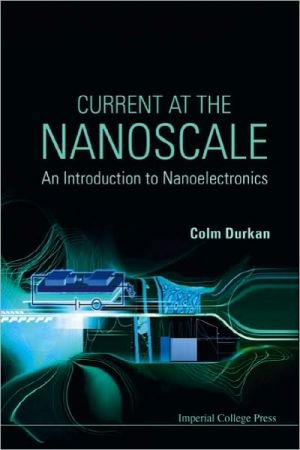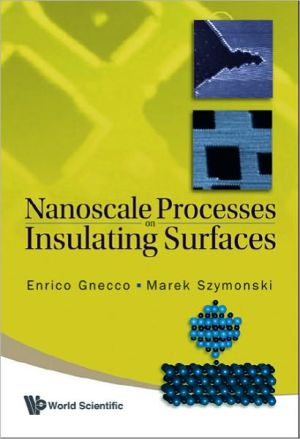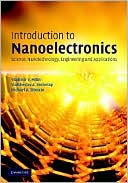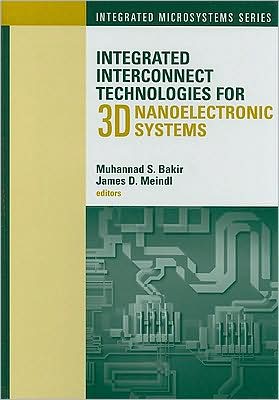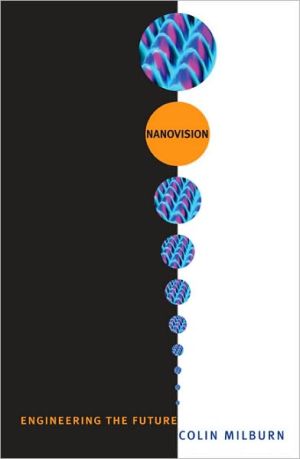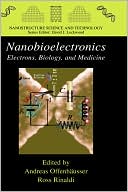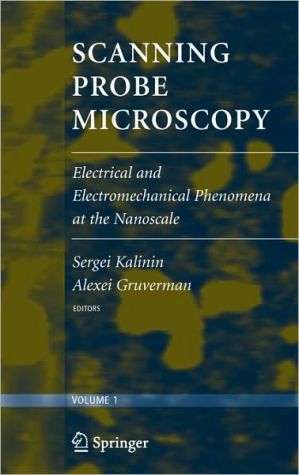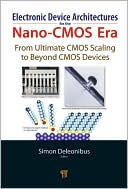Current at the Nanoscale: An Introduction to Nanoelectronics
This introductory text deals with how electric currents behave at the nanometer scale. The book ties together several aspects of recent research on current flow at the nanoscale, including its relevance in defects, grain boundaries, tunneling, and atomic contacts; its effects through nanostructures, particularly for transistor miniaturization; and the techniques used to probe currents and voltages at the nanoscale, focusing on scanning probe microscopy and transport measurements. It covers...
Search in google:
This introductory text deals with how electric currents behave at the nanometer scale. The book ties together several aspects of recent research on current flow at the nanoscale, including its relevance in defects, grain boundaries, tunneling, and atomic contacts; its effects through nanostructures, particularly for transistor miniaturization; and the techniques used to probe currents and voltages at the nanoscale, focusing on scanning probe microscopy and transport measurements. It covers topics such as quantum transport, mesoscopic physics, and molecular electronics, among others. Unlike other books on this subject that are almost entirely theoretical, the introductory nature of this book strikes a balance between theory and experiment. Moreover, given the introductory nature of the book, it will not become obsolete quickly and chapters can be added at later stages as new developments inevitably arise. Based largely on MEng and MPhil courses that have been originated and taught by the author, as well as on his own research, the book is written primarily for postgraduate students, but contains elements that undergraduates can also understand and apply. The wide coverage of topics allows for a broad readership base, and serves as a good starting point for those who wish to do work on nanoscale transport.
Preface viiMacroscopic Current Flow 1The Classical (Drude) Model of Electronic Conduction and Ohm's Law 2The Quantum (Free-Electron) Model of Electronic Conduction 4The Nearly-Free Electron Model of Electronic Conduction and Band Structure 13Effective Mass 21The Origins of Electrical Resistance 24Size Effects on Electrical Resistance 31Overview of Transistors 32Surface Effects 36Quantum Current Flow 41Why Shrink Devices? 44Point Contacts: From Mesoscopic to Atomic 46Conductance from Transmission 48Calculation of Transmission Probability and Current Flow in Quantum Systems 55Introduction to the concept of transmission probability 55Single potential step 57Single potential barrier 61Symmetric barrier: No applied voltage 61Asymmetric barrier: Current flow due to applied bias 66Double potential barrier 69Symmetric barriers: No applied voltage 69Tunnelling through multiple barriers with no phase coherence 74Asymmetric barriers: Applied voltage 78Resonant tunnelling devices: Further details 82A more realistic calculation for a single potential barrier: The WKB approximation 85Techniques for the Fabrication of Quantum Nanostructures 92Mesoscopic Transport: Between the Nanoscale and the Macroscale 99Introduction 99Boltzmann Transport Equation 100Resistivity of Thin Films and Wires: Surface Scattering 100General principles 1001D confinement: Thin film 1032D confinement: Rectangular wire 1052D confinement: Cylindrical wires 106Resistivity of Thin Films and Wires: Grain-Boundary Scattering 107Experimental Aspects: How to Measure the Resistance of a Thin Film 113Scanning-Probe Multimeters 119Scanning-Probe Microscopy: An Introduction 119Scanning Tunnelling Microscopy 121Basic principles 121Scanning tunnelling microscopy in practise 126Atomic Force Microscopy 134Modes of operation of AFM 135Kelvin-probe force microscopy 140Conducting mode AFM 143Electromigration: How Currents Move Atoms, and Implications for Nanoelectronics 155Introduction to Electromigration, Wire Morphology 155Fundamentals of Electromigration - The Electron Wind 156Electromigration-Induced Stress in a Nanowire Device 158Current-Induced Heating in a Nanowire Device 160Diffusion of Material, Importance of Surfaces, Failure of Wires 167Experimental Observations of Electromigration and Heating in Nanowires 169Failure as a function of wire length 170Failure as a function of wire width 170Experimental Observations of Electromigration in Micron-Scale Wires 173Wire Heating - Additional Considerations 174Consequences for Nanoelectronics 181Elements of Single-Electron and Molecular Electronics 185Single-Electron Transport and Coulomb Blockade 185Molecular Electronics: Why Bother? 188Mechanisms of Electron Transport Through Molecules 190Visualising Transport Through Molecules 192The Contact Resistance Problem 193Contacting Molecules 194Nanogaps formed by electron-beam lithography 195Nanogaps formed by electromigration 195Mechanically-controlled break junctions 198Molecular sandwiches 200STM probing of molecules 201The Future 202Solutions to Problems in Chapter 2 207Index 209
